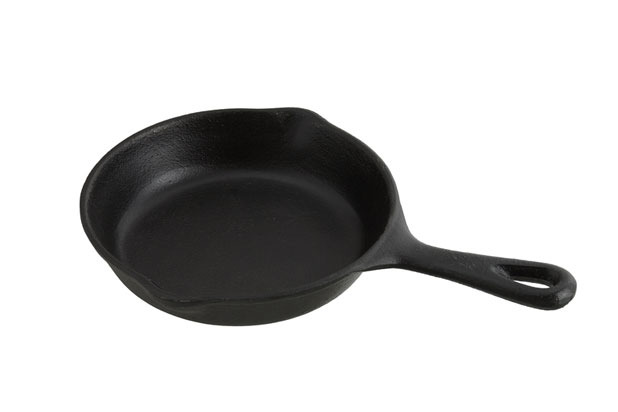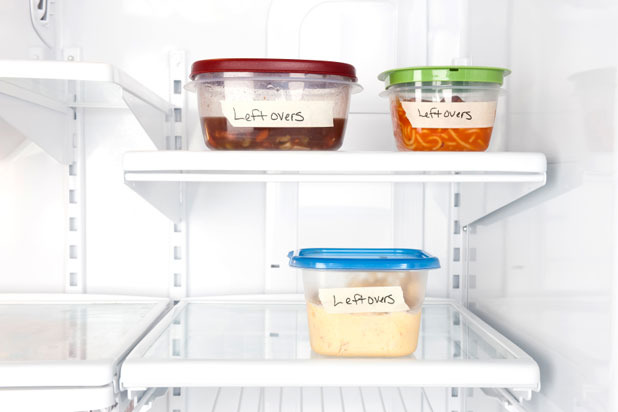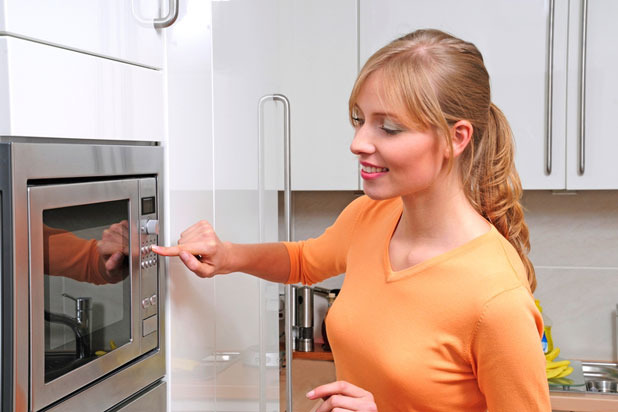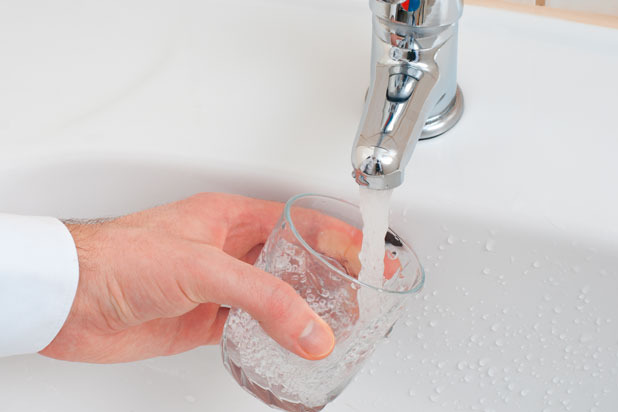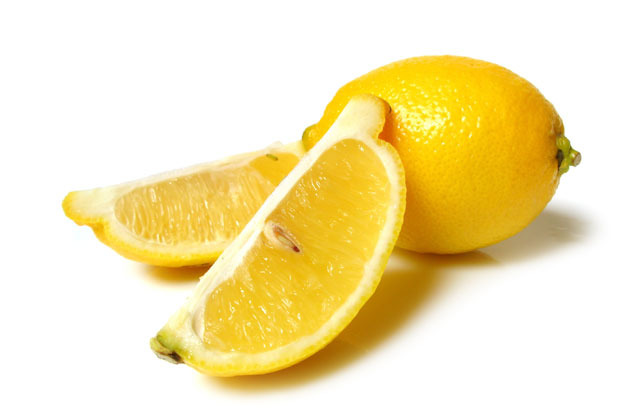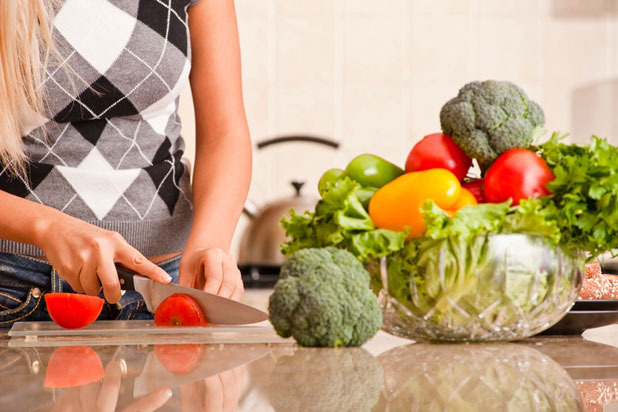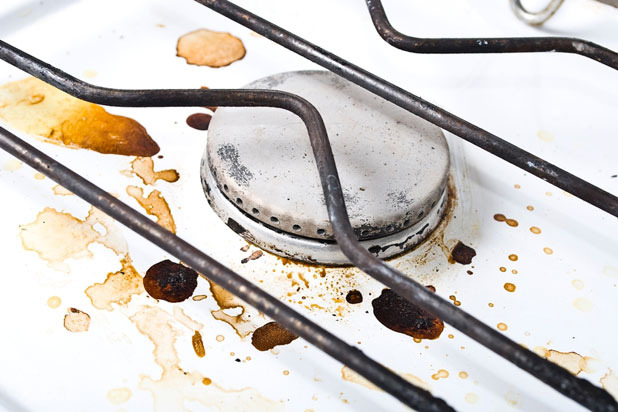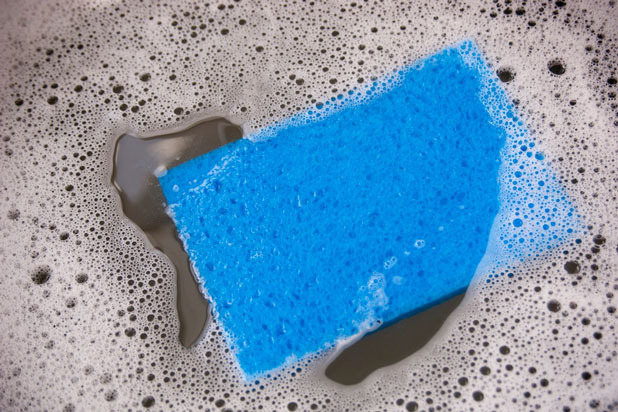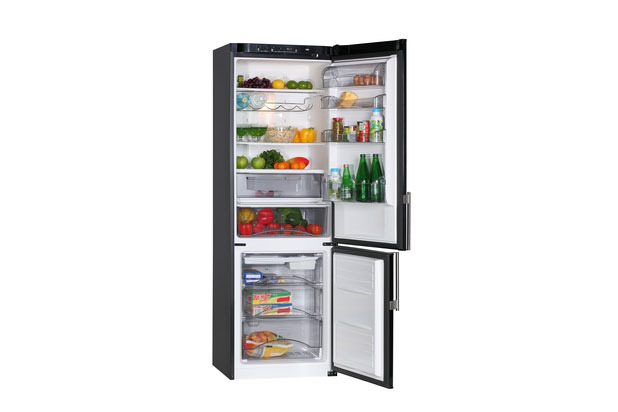9 Hidden Kitchen Dangers And How To Avoid Them Slideshow
Ask Dave Wentz and he'll tell you that it's probably safer to avoid regular nonstick pans whenever possible and opt for more natural coatings (like ceramic and sand) or use well-seasoned cast-iron skillets instead. Why? He explains that nonstick cookware is generally coated with polytetrafluoroethylene (PTFE), a "polymer that can release potentially hazardous fumes and particles into the air under extremely high temperatures. According to the Environmental Working Group (EWG), a nonstick pan at 680 degrees on a regular electric stove released six toxic gases, including two carcinogens." While he says that these extreme high temperatures are unlikely to be reached on your stovetop, an empty nonstick pan left alone for a few minutes on high could reach that temperature. His advice is to play it safe.
Microwaves and Plastics: Friends or Foes?
Though convenient and seemingly everywhere, plastics are not your best choice when storing or microwaving food. Wentz says that though plastics are slow to degrade completely in the environment, they are still prone to breaking down under harsh conditions, which include heating and microwaving, repeated washings with harsh detergents, and prolonged contact with fatty foods and oils. As he explains it, when plastics break down "their monomers — essentially the chemical building blocks of plastics — as well as dangerous chemical additives can leach into your food. These chemicals include endocrine disruptors and carcinogens." Not things that you want in yours or your family's food.
He recommends opting for glass containers instead of plastic containers and plastic wrap.
Microwaves and Plastics: Friends or Foes?
Though convenient and seemingly everywhere, plastics are not your best choice when storing or microwaving food. Wentz says that though plastics are slow to degrade completely in the environment, they are still prone to breaking down under harsh conditions, which include heating and microwaving, repeated washings with harsh detergents, and prolonged contact with fatty foods and oils. As he explains it, when plastics break down "their monomers — essentially the chemical building blocks of plastics — as well as dangerous chemical additives can leach into your food. These chemicals include endocrine disruptors and carcinogens." Not things that you want in yours or your family's food.
He recommends opting for glass containers instead of plastic containers and plastic wrap.
Hanging Out with Microwave: Bonding Time or Bad Move?
Whether or not it's safe to stand in front of your microwave while it's in use seems to be a common debate. The answer? Wentz says that microwave ovens are "built out of materials that shield you from that radiation, but it is possible that an older or malfunctioning model may leak higher amounts than is recommended for human health." Though you can buy a Gauss meter and measure the leakage at home, it might be smarter to play it safe and stand a few feet away while it's in use.
Drinking From the Tap: Embrace It or Skip It?
Tap water is being actively promoted not only by states but also by numerous restaurants who only serve tap water (no bottled sparkling or flat water for patrons). But how safe is it to drink at home? Wentz says that your best bet is to filter your water before drinking it. He recommends using a Brita filter or another type of pitcher that has an activated carbon filter that will help remove pesticides, solvents, chlorine, and some microbes. These types of filters won't remove fluoride or heavy metals in the water, so if you're interested in finding out what's in your city's water, Wentz says to check out some of the online resources available like this project put together by The New York Times and the Environmental Working Group: http://projects.nytimes.com/toxic-waters/contaminants
Commercial Cleaners: Does Going Green Mean Not Being Clean?
"Truly natural cleaners are not only safer for you and the environment, but they are also considerably cheaper and as equally effective as store-bought cleaners. There are a huge number of online resources, including myhealthyhome.com, with tried and true recipes for homemade, natural cleaners." However, Wentz notes that with such few regulations in this area that it's hard to know whether the expensive "green" cleaners are safer or better for the environment.
He says that you can actually clean your entire house with just three products: baking soda, vinegar, and lemon juice. "It's just a matter of knowing the right combinations for the right surfaces."
Is It Safe to Eat off of a Counter Cleaned with Chemicals?
My mother would immediately counter with an emphatic, "No!" And, she's not too far off. As Wentz says, the scary thing about whether the chemicals in household cleaners are safe is that "we just don't know. In fact, in most cases, we don't even know what chemicals are used in our cleaning products, because manufacturers are not required to include that information on the label." He does say that most manufacturers actually recommend that after you use a disinfectant wipe that you thoroughly rinse the surface (like countertops, high chairs, or toys) that could come in contact with food.
True or False: Greasy Stovetops Can Only Be Cleaned with Industrial Chemicals.
False. Wentz says that baking soda is actually a great, non-toxic solution for cutting grease. He says that if your stovetop has a fair amount of gunk on it, then sprinkle the surface with baking soda and a little water so it forms a thick paste. Then, using a non-scratch sponge, scrub the paste into all of your stove's nooks and crannies.
What to do with the stubborn, burned-on food that's stuck to the surface? "Mix up some extra baking soda paste with a little soap, apply it to the area, and allow it to soak for about 20 minutes before scrubbing again. When you're done, wipe the paste off with a clean sponge and water."
A Kitchen Sponge: Hotbed of Bacteria?
Well, they can be. But as Wentz suggests, if you microwave them for two minutes you can eliminate almost all of the bacteria. Since this is such an easy and effective method for sanitizing sponges, he says that you can keep your sponge for as long as it holds together and you're disciplined enough to sanitize it. If you don't want to use a microwave, or don't own one, he says that you can also clean your sponge by dropping it in a pot of boiling water with a few spoonfuls of vinegar for about three minutes.
Refrigerators: How Often Do You Need to Clean Them?
"It's important not to get too hung up on sanitizing every part of your home. There are some bacteria in your fridge, and that's OK." But what Wentz does suggest is making sure that raw meat is kept completely separate from fruits and vegetables since raw meat can contain bacteria like Salmonella, which can be very dangerous. After that, he recommends cleaning your fridge twice a month. What does that mean? "Emptying out the fridge, cleaning out the interior surfaces, removing bins and shelves, and washing them. But this doesn't mean you should reach for harsh, chemical cleaners. A generous amount of warm, soapy water is often enough to clean your fridge. For a deep cleaning, break out the borax powder and start scrubbing. Doing this can reduce the risk of microbial contamination."
